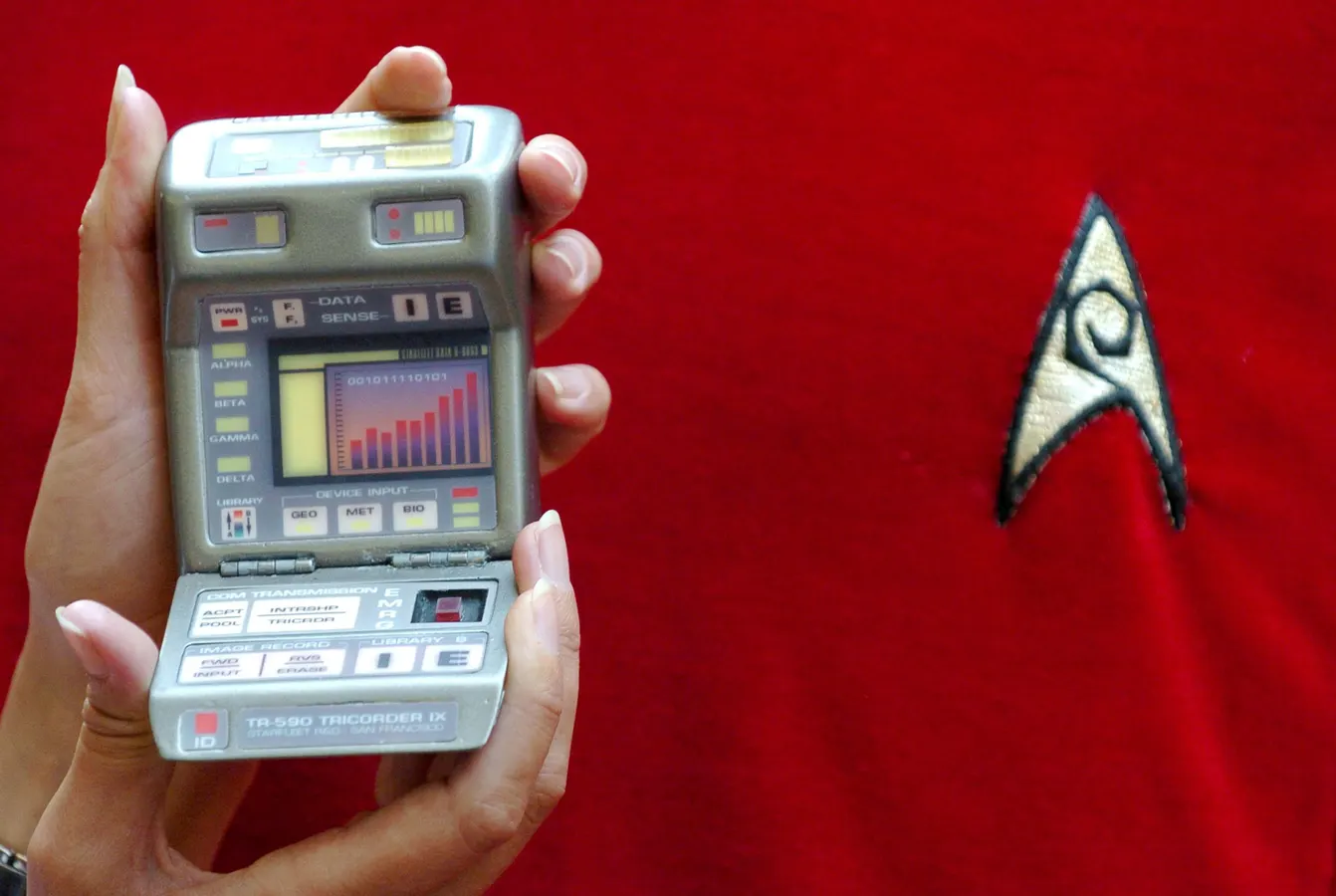By Allen Adamson Contributor David Lodge
The AI future feels less like a shock and more like something we鈥檝e been rehearsing for all along
Star Trek memorabilia being auctioned to mark the 40th anniversay of Star Trek. Tricorder. (Photo … More by David Lodge/FilmMagic)
Everywhere you turn, someone鈥檚 talking about AI. It鈥檚 the centerpiece of Hard Fork and Pivot, of course鈥攂ut it’s also dominating more mainstream conversations. Ezra Klein can’t stop dissecting its moral implications. *The Economist* is on its third AI cover this quarter. Even cocktail-party chatter, once reserved for politics and real estate, now includes debates over ChatGPT prompts. AI isn’t just a tech story anymore; it’s the air we’re breathing.
And while some are scrambling to keep up, for me, this moment doesn’t feel like a disruption. It feels like a reunion.
I began my career just as the world was transitioning from paper to digital. The tools were clunky, and the transitions were slow. But even before I entered the workforce, I’d unknowingly been attending cultural prep classes for the world we’re now stepping into.
Like many in my generation, I grew up watching Star Trek. When the crew faced a crisis, they didn’t pull out a manual; instead, they asked, “Computer, analyze the anomaly and recommend an approach.” The idea of speaking naturally to a machine and expecting meaningful guidance was already embedded in our collective expectations.
MORE FOR YOU
When crew members left the ship, they carried tricorders鈥攈andheld analyzers that scanned environments, accessed vast databases, and offered real-time feedback. Sound familiar? The iPhone in your pocket is essentially that tricorder integrated into your life without a second
The ship’s Doctor? A hologram an AI whose medical expertise often surpasses any human physician. “Please state the nature of the medical emergency” may have become a punchline, but it reflected something profound: artificial intelligence as a trusted, high-stakes partner. The crew didn’t fear the Doctor, they relied on him, worked with him, and respected what he could do.
Watch Here https://youtu.be/u3Ctpqdv7f4?si=T8_qsvyao9b8FHCf
And when they needed to unwind, they turned to the holodeck鈥攆ully immersive, mixed-reality environments indistinguishable from real life. At the time, it felt like far-off science fiction. Now? Visit an Apple Store and try the Vision Pro. While it may not be ready for prime time, you’ll quickly realize that we’re closer to the holodeck than you think.
Watch here: https://youtu.be/Oy5DAxGhV_c?si=nuWgcXxnbtSmgIla
We even had an early preview of where humanoid robotics might lead. In *The Next Generation*, Data wasn’t just an android. He was a sentient, evolving being who raised questions about identity, emotion, and morality. At the time, he was fiction. Today, the line between AI and robotics is narrowing faster than most realize.
None of this is to say we’ve figured everything out. Questions of bias, privacy, and trust still loom. Remember HAL 9000’s chilling refusal in 2001: A Space Odyssey?
Watch here: https://youtu.be/Mme2Aya_6Bc?si=MDyQ445nJoLELn5s
But that’s why this AI wave feels less like a leap into the unknown and more like the next step in a story we’ve been rehearsing for decades. We’ve seen these interfaces before. We’ve practiced these behaviors with Alexa, Siri, and now GPT, Claude, and whatever comes next.
For brand builders and business leaders, the insight is simple: AI doesn鈥檛 need to feel robotic or unfamiliar. The winning brands won’t be the ones that make AI the headline. They’ll be the ones that make it seamless, human, and emotionally aligned with what consumers already expect technology to do.
This isn’t the dawn of something foreign; it’s the next chapter in a story we’ve been telling ourselves for a long time. We’re not navigating a strange new world. We’re returning to one we’ve quietly been preparing for. And now, we’re all ready to be beamed up into the coming AI world.
Editorial StandardsReprints & Permissions
